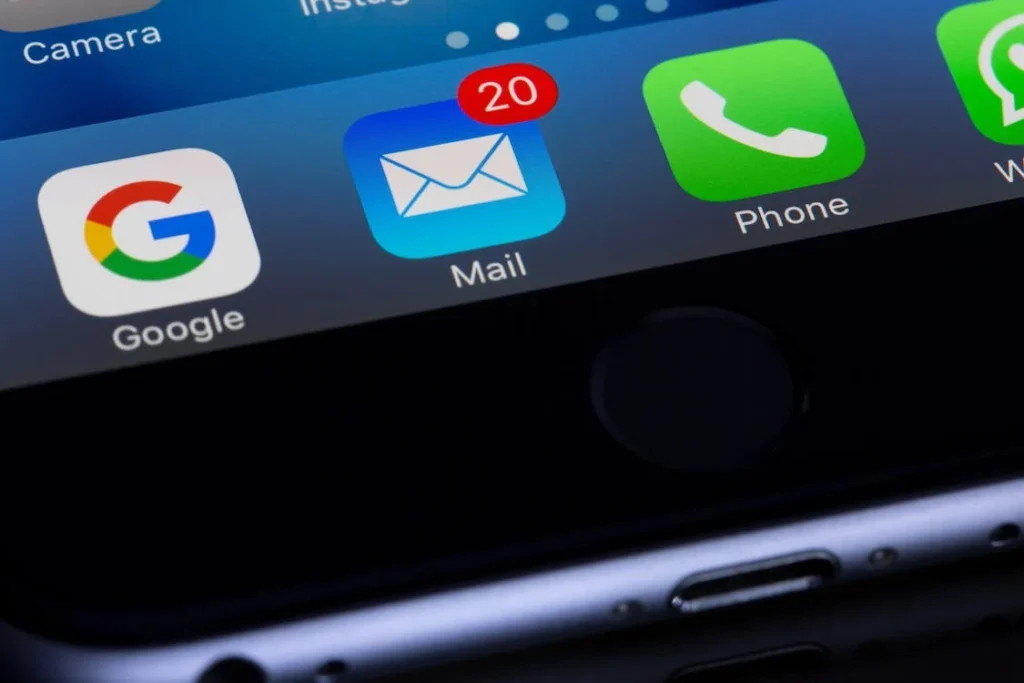Traditional Marketing Overview
Definition of Traditional Marketing
Traditional marketing encompasses strategies that do not rely on the internet or digital platforms. This includes methods such as telemarketing, flyers, print advertising, and television commercials. These approaches have been a cornerstone of marketing for decades, providing businesses with various means to reach their target audiences effectively. The methods are typically broader in reach, aiming to engage a wide demographic without the precise targeting available in digital marketing. For a more comprehensive understanding, you can explore our article on the traditional marketing definition.
Evolution of Traditional Marketing Methods
Over the years, traditional marketing methods have undergone significant transformations. Prior to the advent of digital marketing, businesses allocated nearly 100% of their marketing budgets to traditional channels. However, in the past three decades, this figure has considerably decreased as digital strategies have gained traction. Today, companies devote an average of 28% of their marketing budgets to traditional methods.
This shift is largely attributed to the rise of digital marketing, which has revolutionized the industry through enhanced targeting capabilities and interactive engagement. Traditional marketing still holds valuable methods, such as TV and radio advertising, but the cost and overall effectiveness are often scrutinized. Consequently, businesses now face the challenge of achieving a balance between both worlds. For insight into the latest developments, refer to our article on traditional marketing trends.
| Time Period | Traditional Marketing Budget Percentage |
|---|---|
| Pre-1990 | 100% |
| 1990-2020 | Average 28% |
Traditional marketing methods continue to be a critical component of many marketing strategies, although they must now often compete with the efficiencies and analytics offered by their digital counterparts. Explore various traditional marketing strategies to better understand how they can complement your current marketing efforts.
Effectiveness of TV Ads
Television advertising remains a prominent traditional marketing method, valued for its ability to reach broad audiences. Understanding the return on investment (ROI) and brand awareness generated by TV ads is crucial for assessing their effectiveness.
TV Ads ROI
TV advertisements boast an impressive average ROI ranging between 300 and 500 percent. This substantial return can be attractive for companies with sizable marketing budgets; however, it may be beyond the means of smaller businesses due to high production and airtime costs (Salespanel).
| Investment Level | Average ROI (%) |
|---|---|
| Low | 300 |
| Medium | 400 |
| High | 500 |
While the results can be compelling, measuring the direct impact of TV ads on sales can be complex. Different factors, such as the timing, frequency, and overall marketing strategy, can also influence the effectiveness of TV advertisements compared to other traditional marketing channels.
Impact of TV Ads on Brand Awareness
Television commercials play a significant role in shaping consumer perceptions and raising brand awareness. The visual and auditory elements of TV ads deliver messages in a captivating way that can resonate with viewers. Research indicates that well-crafted advertisements can lead to increased recognition and familiarity with a brand, ultimately fostering customer loyalty (Monday Loves You).
| Brand Awareness Metrics | Measurement Method |
|---|---|
| Recognition Rate | Surveys and Polls |
| Recall Rate | Brand Audits |
| Engagement Rate | Social Media Interactions |
Within marketing strategies, TV ads provide a platform for storytelling and emotional engagement, setting them apart from many other marketing methods. Utilizing storytelling to connect with audiences can significantly enhance the impact of your advertising efforts.
Despite the rise of digital marketing alternatives offering precision targeting and measurable results, television advertising remains an effective way to achieve broad reach and build brand awareness as part of your overall traditional marketing strategies.
Direct Mail Marketing Insights
Direct mail marketing remains a pivotal strategy within the realm of traditional marketing methods. This approach is particularly notable for its effectiveness and its ability to engage demographics that are often elusive to digital strategies.
Effectiveness of Direct Mail
Studies indicate that direct mail marketing generates a response rate of 4.9% for house lists and 1.0% for prospect lists, indicating its superior performance compared to many digital channels (SPYCE Media). Direct mail is particularly effective at influencing purchasing decisions, especially when recipients are close to making a purchase. According to Pebble Post, customers are significantly more likely to consider items received in direct mail when they are in the buying cycle (Salespanel).
| Direct Mail Type | Response Rate (%) |
|---|---|
| House Lists | 4.9 |
| Prospect Lists | 1.0 |
The tangible nature of direct mail, compared to digital ads, often results in higher visibility and engagement rates. This can create a lasting impression on consumers who may overlook online advertisements.
Millennial Response to Direct Mail
Interestingly, millennials tend to respond positively to direct mail marketing, showing a higher propensity to take action compared to other demographics. This demographic is more likely to engage with direct mail offers, making it a valuable channel for reaching younger audiences.
The personalized experience of receiving mail gives direct mail an edge in capturing attention, particularly when it’s well-targeted and creatively designed. Incorporating unique elements such as QR codes or personalized messages can further enhance engagement rates among millennials.
Utilizing direct mail as part of your broader marketing strategy can effectively complement other traditional marketing efforts. Businesses interested in exploring this approach should also look at various traditional marketing tools and consider integration strategies that incorporate both traditional and digital mediums, thereby maximizing outreach and impact.
The Power of Billboards
Billboards play a significant role in traditional marketing by contributing to brand awareness and capturing audience attention. Their placement in high-traffic areas and distinctive designs can effectively promote your message and reach a broad audience.
Brand Awareness through Billboards
Billboards are known for creating brand awareness on a national scale, despite the challenges in calculating direct return on investment (ROI). Many companies leverage billboards to enhance visibility and link their brand to specific locations, making it easier for potential customers to recall their brand when needed. This format remains effective in establishing credibility for a company, connecting it with reliability and stability owing to its physical presence (Lucid Advertising).
| Key Benefits of Billboards | Description |
|---|---|
| High Visibility | Billboards are often placed in prominent locations with high foot or vehicle traffic, ensuring that a vast audience sees them. |
| Broad Reach | Unlike digital marketing, which can target specific demographics, billboards can be effective for brands aiming to attract a more diverse range of customers. |
| Creating Impact | Creative and unique designs stand out in a saturated environment, contributing to effective brand recall and awareness (Salespanel). |
Design Strategies for Memorable Billboards
The design of a billboard is a crucial element of its effectiveness. A memorable billboard should encapsulate your brand message in a clear, bold, and visually engaging manner. Here are some design strategies to consider:
Simplicity: A straightforward and clear message is more likely to be remembered. Aim for short phrases or powerful single words that resonate with your audience.
High-Quality Visuals: Use bold colors and high-resolution images. Attention-grabbing visuals can significantly enhance the effectiveness of your billboard.
Consistency with Brand Identity: Ensure that your billboard’s design aligns with your overall brand image and message. Consistency fosters recognition and trust.
Location Consideration: Design your billboard taking into account the location and context in which it will be viewed to maximize relevance and impact.
Call-to-Action: Including a clear call-to-action encourages viewers to engage further with your brand, whether that be visiting your website or calling for more information.
Utilizing these design strategies can increase the potential impact of your billboard, making it a powerful tool within your traditional marketing arsenal. Emphasizing effective traditional marketing methods is critical in building a cohesive marketing strategy that integrates diverse approaches. For more information on various traditional marketing strategies, refer to our dedicated article on this topic.
Broadcasting in Modern Marketing
Broadcasting remains a relevant strategy within the realm of traditional marketing methods. It provides businesses with significant opportunities to enhance brand visibility and reach a wide audience.
Audience Reach with Broadcasting
Broadcast advertising offers an extensive audience reach, making it a powerful option for creating brand awareness on a national level. You can leverage this traditional marketing channel to announce special offers and reinforce your brand identity. The ability to reach vast audiences is particularly beneficial when launching major campaigns or promoting new products.
| Platform | Estimated Reach (in millions) |
|---|---|
| TV | 200+ |
| Radio | 90+ |
| Streaming Services | 50+ |
The figures above illustrate the potential reach across different broadcasting platforms. Despite increasing competition from digital platforms, broadcasting still serves as a valuable channel for communicating with large segments of the population (SPYCE Media).
Broadcasting can effectively create brand awareness and connect with audiences that you may not reach through digital means. High-quality content can resonate with viewers and listeners, facilitating a deeper brand connection.
Cost Considerations for Broadcasting
While broadcasting offers a variety of benefits, it is important to acknowledge the associated costs. Compared to other traditional marketing methods, broadcasting tends to be more expensive. This can be a crucial factor for businesses planning their marketing budgets.
| Cost Elements | Approximate Cost Range |
|---|---|
| TV Advertising | $1,000 – $10,000+ per spot |
| Radio Advertising | $200 – $5,000 per spot |
| Production Costs | $5,000 – $50,000+ |
The table above outlines typical costs associated with broadcasting on various platforms. These expenses can vary significantly based on factors such as time slot, geographic area, and audience demographic (Salespanel).
Understanding these costs is essential for optimizing your marketing budget and determining the most effective allocation of resources. Although the financial investment may be higher, the return on investment can justify the expenditure, particularly if you successfully engage a large audience and achieve your marketing objectives.
In summary, while broadcasting does incur higher costs compared to other forms of traditional marketing, its potential for broad audience reach is unparalleled. By strategically allocating your budget to include broadcasting, you can harness its benefits to enhance brand visibility and drive growth in your organization. For additional insights, explore traditional marketing strategies.
Face-to-Face Sales Interactions
Value of Salespeople
Salespeople play a crucial role in traditional marketing methods. They provide valuable face-to-face interactions that allow for a deeper understanding of customer needs, leading to improved conversion rates. While salespeople can be relatively expensive compared to other marketing tactics, the investment is often justified by the results they generate. Personalized interactions foster trust and reliability, essential components in any successful sales strategy.
The effectiveness of face-to-face interactions is underscored by numerous studies that highlight their impact on customer satisfaction and loyalty. Customers are more likely to engage with a brand after having a direct conversation with a salesperson, which can significantly influence their buying decisions.
| Aspect of Value | Description |
|---|---|
| Personalized Service | Addresses individual customer needs, enhancing satisfaction. |
| Trust Building | Establishes rapport and trust, which can improve conversion rates. |
| Closing Sales | Direct interaction often leads to quicker decision-making and sales closure. |
For more insight into the dynamics of face-to-face sales interactions, explore our article on traditional sales strategies.
Benefits of Face-to-Face Interactions
There are several key benefits associated with face-to-face sales interactions, particularly in the context of traditional marketing methods.
Enhanced Communication: Non-verbal cues, such as body language and facial expressions, enrich the conversation and help convey sincerity and engagement.
Immediate Feedback: Sales personnel receive instant reactions from customers, enabling them to adjust their pitch and address concerns on the spot.
Stronger Relationships: Face-to-face interactions facilitate long-term relationships with customers, promoting brand loyalty and repeat business.
Higher Conversion Rates: Studies show that personalized interactions can lead to significantly higher conversion rates compared to impersonal sales tactics.
Opportunities for Upselling: Salespeople can effectively identify additional customer needs during conversations, allowing for upselling opportunities.
These benefits highlight the advantages of retaining face-to-face sales approaches amidst the growing prevalence of digital marketing. For a further discussion on balancing traditional and digital methods, refer to our article on integrating traditional and digital marketing.
Incorporating traditional marketing practices, such as face-to-face sales, can create a solid foundation for customer relationships and foster a loyal client base. Understanding and leveraging these interactions can enhance overall marketing effectiveness. For more examples of traditional marketing, see our collection of traditional marketing examples.
Traditional vs. Digital Marketing
Reach and Targeting Comparison
When it comes to audience reach, traditional marketing methods typically utilize broad media platforms such as television, radio, and print advertising. These methods generally aim for mass appeal but often lack precision in targeting specific consumer segments. Conversely, digital marketing strategies, including search engine optimization (SEO), social media advertising, and email marketing, offer more targeted approaches. This allows you to interact with consumers who are more likely to engage with your messages, enhancing the effectiveness of your campaigns (Monday Loves You).
| Marketing Method | Reach Type | Targeting Precision |
|---|---|---|
| Traditional Marketing | Mass media | Low |
| Digital Marketing | Online platforms | High |
Digital marketing excels in granular targeting where marketers can create audiences that match their ideal customer profiles using tools such as pay-per-click (PPC) advertising and social media platforms like Facebook. This level of targeting is paramount in today’s competitive marketplace (Online Master of Science in Marketing – William & Mary).
Measurement and Effectiveness
The effectiveness of marketing strategies is crucial for determining return on investment (ROI). Traditional marketing methods, while impactful, often come with challenges in measuring their effectiveness. Methods like TV and radio advertising, along with print media, can incur high costs and do not always yield measurable results. This makes it difficult to assess the ROI from traditional campaigns.
On the other hand, digital marketing provides significant advantages in measurement and tracking. Digital analytics platforms allow you to gain insights into campaign performance, including metrics such as website traffic, conversion rates, and click-through rates (CTR). This real-time tracking capability enhances the ability to optimize strategies and justify marketing budgets (Monday Loves You).
| Measurement Capacity | Traditional Marketing | Digital Marketing |
|---|---|---|
| Return on Investment (ROI) | Difficult to assess | Easily measurable |
| Campaign Performance | Limited insights | Real-time tracking |
Going forward, businesses will need to refine their analytical skills as the landscape becomes more data-driven. While traditional marketing methods may retain their significance, the dominance of digital marketing appears to be growing (Online Master of Science in Marketing – William & Mary). For a look at various methodologies, explore our sections on traditional marketing examples and traditional marketing strategies.
Challenges in Digital Marketing Adoption
As you transition into leveraging digital marketing methods, there are significant challenges you may face. Two of the most pressing issues are the skill gap in digital marketing among your team and attracting the right talent to enhance your capabilities.
Skill Gap in Digital Marketing
Implementing effective digital marketing strategies requires specialized knowledge and expertise. Traditional marketers may lack the technical skills and digital literacy needed to utilize digital platforms effectively. This gap can hinder your organization’s ability to capitalize on the advantages of digital marketing, such as granular targeting and real-time analytics.
| Skill Area | Traditional Marketing Knowledge | Digital Marketing Knowledge Needed |
|---|---|---|
| SEO | Moderate | High |
| Data Analysis | Low | High |
| Social Media Management | Low/Moderate | High |
| Content Marketing | Moderate | High |
| Technical Skills | Low | High |
Bridging this skill gap is crucial. You may consider investing in training programs or hiring consultants to equip your team with the necessary skills and knowledge. This can ensure that your marketing strategies evolve along with the industry.
Attracting Digital Marketing Talent
Attracting and retaining digital marketing talent presents another challenge. Many businesses find it difficult to compete with the demand for skilled professionals in this field. The digital landscape is evolving rapidly, making it essential to have a team that not only understands current trends but can also adapt to those changes.
High turnover rates in digital roles can disrupt your marketing efforts and hinder brand progress. To combat this issue, consider implementing strategies to enhance your workplace culture, such as:
- Offering competitive salaries and benefits
- Providing opportunities for professional development
- Creating a supportive work environment that prioritizes innovation
Despite the challenges presented by the shift towards digital marketing, traditional marketing methods still hold value. Integrating traditional and digital approaches can ensure a well-rounded marketing strategy that addresses the unique needs of your audience. For more details on how to integrate both methods, refer to our article on integrating traditional and digital marketing.
Integrating Traditional and Digital Marketing
Finding the right balance between traditional and digital marketing can significantly enhance your overall marketing strategy. By understanding how to effectively combine these two approaches, you can reach broader audiences while maximizing engagement with your target market.
Balancing Traditional and Digital Strategies
Traditional marketing methods, including mass media platforms like television, radio, and print advertising, can reach a wide audience and boost brand visibility. However, these methods often lack the precision found in digital marketing strategies, which allow for targeted approaches like SEO and social media advertising (Monday Loves You).
To develop a balanced strategy, consider the following elements:
| Aspect | Traditional Marketing | Digital Marketing |
|---|---|---|
| Audience Reach | Broad reach; great for brand exposure | Targeted; reaches specific consumer segments |
| Measurement | Lacks comprehensive tracking capabilities | Allows for real-time tracking and analytics |
| Cost | More expensive; fixed costs for ads | Generally more cost-effective with varying budgets |
| Interactivity | Limited; mostly one-way communication | High; fosters interaction and engagement |
| Personalization | Generic messaging | Customizable content for specific consumers |
Incorporating various traditional marketing channels into your digital strategy enhances overall effectiveness. For instance, use digital platforms to promote traditional campaigns, or integrate social media to create buzz around a TV advertisement.
Leveraging the Strengths of Each Approach
Digital marketing provides numerous advantages, including real-time insights into campaign performance, such as website traffic and customer engagement metrics (Monday Loves You). This data allows for continual optimization, something traditional marketing often lacks.
However, traditional marketing is still effective in reaching audiences that digital methods may miss. It offers brand awareness and visibility through established channels that resonate with certain demographics.
Identify opportunities to leverage each approach effectively:
- Social Media & TV Ads: Promote television ad campaigns via social media for dual reach.
- Direct Mail & Email Marketing: Use direct mail to complement email campaigns, reaching diverse segments of your audience.
- Billboards & Local SEO: Combine local advertising through billboards with an optimized online presence to create a multi-channel experience.
By integrating both traditional marketing methods and digital strategies, you will not only enhance your marketing reach but also allow your brand to connect with customers in multiple ways. This holistic approach is essential for contemporary marketing success. For further insights into the benefits of each method, explore our articles on traditional marketing techniques and traditional vs digital marketing.





















